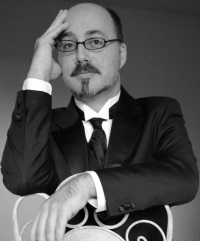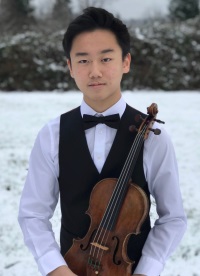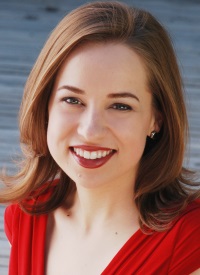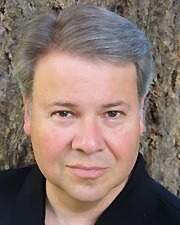Echoes of Old England
Saturday, February 3, 2018 • 7:30 p.m.
First Free Methodist Church (3200 3rd Ave W)
Orchestra Seattle
Seattle Chamber Singers
Michael Wheatley, conductor
Shintaro Taneda, violin
Kate Tombaugh, mezzo-soprano
Barry Johnson, baritone
Program
Edward Elgar (1857 –1934)
Sospiri, Op. 70
Arnold Bax (1883 –1953)
November Woods
Camille Saint-Säens (1835 –1921)
Violin Concerto No. 3 in B minor, Op.61 [third movement]
— intermission —
Ralph Vaughan Williams (1872 –1958)
Five Tudor Portraits
About the Concert
Edward Elgar’s touching miniature Sospiri (“Sighs,” for strings, harp and organ) is sure to warm you up from the cold, after which Arnold Bax will color your imagination with his evocative tone poem November Woods (secretly inspired by an illicit love affair). A performance by the winner of our annual concerto competition will close the first half of the program. Ralph Vaughan Williams’ rarely heard choral tour de force Five Tudor Portraits, setting verses by English poet John Skelton, will bring the evening to a grand close.
About the Conductor

Active as a conductor, violinist and classical-music educator, Michael Wheatley is the assistant conductor of the Eastman Philharmonia Orchestra at the Eastman School of Music. He previously served as the associate conductor of the American Youth Philharmonic (Washington, D.C.), associate conductor of the Southern Illinois Symphony Orchestra (Carbondale, Illinois) and music director of the Seven Hills Sinfonietta (Cincinnati, Ohio).
As the sixth music director of the Seven Hills Sinfonietta, Mr. Wheatley established a reputation as a builder of orchestras and audiences. Under his leadership, the orchestra nearly doubled in size, relocated to an expansive new concert venue, formed significant new relationships with grant-giving organizations, greatly expanded its orchestral library, and was featured in a film for the Sundance Channel. For six unprecedented seasons he led the orchestra to perform ever more substantial and challenging works of the orchestral repertoire.
Mr. Wheatley has led professional orchestras on three continents, most recently in Poland, Russia and Ukraine, and in the United States with the Rochester Philharmonic, the Fargo-Moorhead
Symphony, the Southern Illinois Music Festival and the Cincinnati Chamber Opera. Equally dedicated to guiding young orchestral players, he has led the student orchestras of Southern Illinois University, the University of Cincinnati’s College-Conservatory of Music, Southeast Missouri State University, Northern Kentucky University, the Pierre Monteux School Festival Orchestra, the St. Petersburg State Academic Symphony (St. Petersburg, Russia), the Eastman School of Music and the American
Youth Philharmonic.
Mr. Wheatley’s conducting teachers have included Christopher Zimmerman, Neil Varon, Vassily Sinaisky, Gustav Meier, Edward Benyas and David Zinman. In 2007 he was the only American conductor to be invited by Maestro Sinaisky as part of a program to study Russian performance practice with the St. Petersburg State Symphony Orchestra, focusing on the symphonies of Shostakovich, Prokofiev and Tchaikovsky. Mr. Wheatley subsequently assisted Maestro Sinaisky in his guest performances with the BBC Philharmonic. In 2010, he became associate conductor of the Southern Illinois Symphony Orchestra, and in 2013 he was featured in an exhibition of up-and-coming professional conductors at the Eastman School of Music, which led to a guest-conducting engagement with the Rochester Philharmonic. He has collaborated with scores of professional artists, including soprano Renee Fleming, violinist David Kim, cellist William Grubb, clarinetist Eric Mandat, and Pulitzer-winning composers John Adams, Ned Rorem, Kevin Puts, Christopher Rouse and Jennifer Higdon.
An alumnus of the Pierre Monteux School for Conductors (Hancock, Maine), Peter the Great Music Academy (St. Petersburg, Russia) and the College-Conservatory of Music at the University of Cincinnati, he is currently pursuing doctoral work in orchestral conducting at the Eastman School of Music. Prior to his conducting career, Mr. Wheatley performed extensively as a violinist. He has appeared with the symphonies of Cincinnati and Dayton in Ohio, Paducah in Kentucky, and as a member of the award-winning Ensemble for 18th Century Music under the direction of the acclaimed harpsichordist and scholar Eiji Hashimoto. As a chamber musician, he has collaborated with members of the Grammy-winning LaSalle and Tokyo String Quartets. He has recorded, as violinist, on the Centaur and Claremont record labels.
About the Soloists

Sixteen-year-old violinist Shintaro Taneda, winner of the 2017–2018 OSSCS Concerto Competition, has also won top honors at the 2016 MTNA Northwest senior string competition, WMEA State Solo and Ensemble Contest, SMTA Simon-Fiset Strings Competition and Performing Arts Festival of the Eastside’s concerto division. Shintaro has performed concerti with Seattle Festival Orchestra, Bainbridge Symphony and Cascade Symphony, and has also been a featured artist in the Seattle Chamber Music Society’s Winter Festival, the Port Angeles Musicale and the popular Ten Grands Concert at Benaroya Hall. An enthusiastic orchestral musician, Shintaro has played in the Aspen Music Festival Philharmonic Orchestra and the NAfME All-Northwest Orchestra. His summer activities have included the Aspen Music Festival, Center Stage Strings, Meadowmount School of Music, Dallas Conservatory’s Music in the Mountains, the Brian Lewis Young Artist Program and the Domaine Forget Music Academy. Shintaro currently studies with Simon James of the Coleman Violin Studio and with Midori Goto at the University of Southern California. He was previously a student of Shizuko Komeya and was a Dorothy Richard Starling Violin Scholarship recipient at the Pressley Violin Studio. He has participated in masterclasses with Rachel Barton Pine, David Perry, Noah Bendix-Balgley, Paul Kantor and Stephen Shipps, among others.

Mezzo-soprano Kate Tombaugh has been praised as “utterly convincing dramatically, and musically superlative” (Seen and Heard International, 2015). Her 2017–2018 season includes debuts with Stockton Opera as Hansel in Hansel and Gretel, as well as with the Champaign-Urbana Symphony, Northwestern Indiana Symphony, Evansville Philharmonic and New Philharmonic. Recent engagements include Angelina in La Cenerentola with Winter Opera St. Louis, Bach’s Mass in B Minor with the Apollo Chorus, and Fanny Price in the American premiere of Jonathan Dove’s Mansfield Park with Indianapolis Opera. Ms. Tombaugh made her Carnegie Hall debut upon winning the Barry Alexander International Vocal Competition. Other portrayals include title roles in Handel’s Ariodante and Massenet’s Cinderella, Annie Oakley in Annie, Get your Gun, and Mad Margaret in Gilbert and Sullivan’s Ruddigore. She has soloed with the Utah Symphony, Jackson Symphony, Paducah Symphony and Lexington Philharmonic, As a young artist, Ms. Tombaugh trained in the Santa Fe Opera Apprentice Artist program, as a Gerdine artist with Opera Theatre of St. Louis, and as a resident artist with Utah Opera. Learn more: katetombaugh.com and pocoapoco.org

Baritone Barry Johnson has sung more than 20 roles with Seattle Opera and Tacoma Opera, in addition to performances with Vashon Opera, Opera Colorado, Anchorage Opera, Portland Opera, Central City Opera, Las Vegas Opera and the Wildwood Festival in Little Rock, Arkansas. On the concert stage, he has been a soloist with orchestras across the Northwest, including the Seattle Symphony, Symphony Tacoma, American Sinfonietta, Yakima Symphony and Northwest Sinfonietta. Concert engagements have included Beethoven&squo;s Ninth, Orff’s Carmina Burana, Handel’s Messiah, Brahms’ Ein deutsches Requiem, Vaughan Williams’ Five Mystical Songs, Rachmaninov’s The Bells, Bach’s Magnificat, Mozart’s Requiem and Fauré’s Requiem. His professional stage-directing credits (with Tacoma Opera, Pacific Northwest Opera, and Bellevue City Opera Ballet) include La Bohéme, Tosca, Così fan tutte, Hansel and Gretel, The Pirates of Penzance, Rossini’s Le comte Ory, Bernstein’s Trouble in Tahiti, Bizet’s La Tragedie de Carmen and Dr. Miracle, Menotti’s The Telephone, , and Pasatieri’s La Divina. Mr. Johnson is on the voice faculty at Pacific Lutheran University, where he teaches private voice and directs operas.
Program Notes
Edward Elgar
Sospiri, Op. 70
Edward William Elgar was born June 2, 1857, in Broadheath, Worcestershire, England, and died in Worcester on February 23, 1934. He composed this work for string orchestra (plus harp and optional harmonium or organ) during December 1913 and January 1914. Henry Wood conducted the New Queen’s Hall Orchestra in the first performance on August 15, 1914, in London.
On December 3, 1913, at a lunch with music publisher W. W. Elkin, Elgar agreed to compose two short pieces that would serve as companion pieces to his 1888 work Salut d’amour — in exchange for 100 guineas plus a royalty of three pence per copy sold. The contract also included a provision that amounted to Elgar’s first recording contract: “Two thirds of the net royalties received in respect of mechanical instrument reproduction to be paid to the Composer.” Elgar composed the first of these pieces, Carissima, in short order. His second effort, Soupir d’Amour (later retitled Sospiri, Italian for “sighs”), emerged as something more somber and profound than the “light music” Elkin had sought, so he offered it to another publisher in two versions: one for violin and piano, the other for string orchestra with harp and organ.
Henry Wood led the premiere of Sospiri at the opening night of his Promenade Concerts in August 1914, barely two weeks after the onset of World War I. (Wood hastily revised the Proms schedule to expunge German works, with Richard Strauss’ Don Juan swapped out for Tchaikovsky’s Capriccio Italien on the opening-night program.) Two days later, Elgar volunteered as a special constable at the Hampstead police station to assist with the war effort. Reviewing the first performance, The Musical Times described Sospiri as “a sweet melancholy air, laid out and scored with masterly reticence and perfection of detail.”
Arnold Bax
November Woods
Arnold Edward Trevor Bax was born in Streatham (a suburb of London) on November 8, 1883, and died in Cork, Ireland, on October 3, 1953. He began work on this tone poem in 1914, completing it in November 1917. Hamilton Harty conducted the Hallé Orchestra of Manchester in the premiere on November 18, 1920. The score calls for 3 flutes, piccolo, 2 oboes, English horn, 3 clarinets, bass clarinet, 2 bassoons, contrabassoon, 4 horns, 3 trumpets, 3 trombones, tuba, timpani, cymbals, glockenspiel, 2 harps, celesta and strings.
A prolific composer in virtually every genre save opera, Arnold Bax is known largely for his seven symphonies and 18 tone poems, including The Garden of Fand, Tintagel, The Happy Forest and November Woods.
While on the surface November Woods may seem to be “an impression of the dank and stormy music of nature in the late autumn,” Bax cautioned that “the whole piece and its origins are connected with certain troublous experiences I was going through myself at the time, and the mood of the Buckinghamshire wood where the idea of this work came, seemed to sound a similar chord as it were. If there are sounds in the music which recall the screaming of the wind and the cracking of strained branches, I hope they may suggest deeper things at the same time. The middle part may be taken as a dream of happier days, such as sometimes come in the intervals of stress either physical or mental.”
The “certain troublous experiences” that inspired this tone poem related to Bax’s wife learning of his love affair with pianist Harriet Cohen. (Mrs. Bax refused a divorce and they remained unhappily married until her death in 1947, at which point Cohen discovered that Bax had been involved with yet another woman for over two decades.)
After leading the well-received world premiere in Manchester, Hamilton Harty (an early proponent of Bax’s music) presented the tone poem with the Royal Philharmonic the following month, but London critics were less enthusiastic. Nevertheless, Bax biographer Lewis Foreman considers it “the best of his nature poems.”
— Jeff Eldridge
Camille Saint-Saëns
Violin Concerto No. 3 in B minor, Op. 61
Saint-Saëns was born in Paris on October 9, 1835, and died in Algiers on December 16, 1921. He composed this concerto during March 1880 for Pablo de Sarasate, who premiered the work in Paris on January 2, 1881. In addition to solo violin, the score requires pairs of woodwinds (with one flute doubling piccolo), horns and trumpets, 3 trombones, timpani and strings.
Saint-Saëns composed his third violin concerto expressly for the Spanish virtuoso Pablo de Sarasate, to whom he had dedicated his Concerto No. 1 and the famous Introduction and Rondo Capriccioso some two decades earlier. The finale of Concerto No. 3 opens with the soloist playing a brief recitative before launching into an Allegro non troppo in B minor and 2/2 time, which Hubbard William Harris described (in a 1904 Chicago Symphony program book) as “a long and elaborate movement of quasi-rhapsodical structure, developed from four distinct themes — the first three being stated by the solo instrument and the violins and violas in harmony (muted and pianissimo). In the recapitulation this fourth theme reappears in the trumpets and trombones fortissimo, embellished by figurations from the strings — to be carried on by the solo instrument, expressively accompanied by the strings and woodwinds; following which the movement comes to an end with a free coda.”
Ralph Vaughan Williams
Five Tudor Portraits
Ralph (pronounced “Rafe”) Vaughan Williams was born October 12, 1872, in Down Ampney, Gloucestershire, England, and died August 26, 1958, in London. He composed this five-movement choral-orchestral work on a commission from the Norwich Festival, conducting the first performance at St. Andrew’s Hall in Norwich on September 25, 1936, leading the London Philharmonic and the Norwich Festival Chorus. In addition to mezzo-soprano and baritone soloists and chorus, the score calls for 3 flutes (one doubling piccolo), 2 oboes (one doubling English horn), 2 clarinets, 2 bassoons, contrabassoon, 4 horns, 2 trumpets, 3 trombones, tuba, timpani, percussion, harp and strings.
Englishman Ralph Vaughan Williams was a composer and conductor; player of violin, viola, piano and organ; teacher, writer and lecturer; and mentor to many younger musicians. He has been described as “one of the truly outstanding composers of his or any age. One who had all the techniques one could wish for; who could experiment with the best of them; who rejuvenated a nation’s musical life; who preserved its musical heritage; and who remained modest and unassuming throughout. This, of course, was part of his greatness.” In general, his compositions (including operas, film scores, ballet and stage music, song cycles, church music and nine symphonies) not only exude, somehow, the essence of “Englishness,” but also exhibit timeless, visionary qualities that continue to enrapture audiences everywhere.
Always deeply interested in the English choral tradition, Vaughan Williams conducted choirs at various music festivals and composed works for them. “I think they thought they’d get ‘O Praise the Lord,’” the composer noted in the case of the work on tonight’s program, “but I sent them the Five Tudor Portraits,” a work that shocked many of its first listeners. Vaughan Williams set poems by one John Skelton, a tutor to the future King Henry VIII when he was Duke of York, featuring brief, metrically uneven rhyming lines (“Skeltonic lines”) that, for Vaughan Williams, required the rollicking, “jazzy” treatment exemplified in the work’s opening portrait, including rather risqué verses that occasioned discomposure among some members of the audience at the premiere. During this rambunctiously racy first movement, according to Vaughan Williams’ second wife (and biographer), Ursula Vaughan Williams, “The elderly Countess of Albermarle sat in the front row getting pinker and pinker in the face and, when the pink turned to purple, Astra Desmond (the contralto soloist), thinking she was going to have a heart attack, was about to lean down from the platform and offer smelling salts. But before this aid could be given she rose to her feet, said ‘Disgusting!’ loudly and clearly, and marched out of the hall. When Ralph learned of the event afterward, he said it certainly showed that the choir’s diction was good, and added reflectively: “A pity she didn’t read the lines I didn’t set.”
The debut of Five Tudor Portraits earned wide critical acclaim, with a correspondent for The Musical Times noting that he had seldom seen an English audience “so relieved of concert-room inhibitions.” Since its highly successful premiere, however, performances of this musically excellent work have been rare due in part to its difficulty (the long fourth movement for women’s chorus and female soloist makes the suite off-putting to many amateur choirs) and the bawdy humor of its opening movement is not universally appreciated!
The suite begins with a Ballad, an exuberant, rhythmically and contrapuntally complex setting of the ribald verses of “The Tunning of Elinor Rumming” that describe Elinor and the goings-on at her hilltop alehouse. Shifting, ragged rhythms lead to a ruminative telling of the tale of “drunken Alice” by the solo mezzo-soprano and a variety of solo instruments.
In the ardent Intermezzo, “Pretty Bess,” the baritone soloist expresses yearning for his love, answered by the chorus. Tenors and basses, using a mixture of Latin and English, declare John Skelton’s disdain for a thoroughly abhorrent character in the ensuing raucous Burlesca, “Epitaph on John Jayberd of Diss.”
“Jane Scroop (Her Lament for Philip Sparrow),” a poignant Romanza for the mezzo-soprano soloist (Jane) and women’s voices (her friends), is a tender, sensitive, heart-rending requiem for a young girl’s pet sparrow, Philip, killed by Gib, her cat. The “Dies Irae” appears in the orchestra as the air is filled with the calls of the birds who participate in Philip’s cortégé and funeral. Jane and her friends pray for the repose of Philip Sparrow’s soul and bid him “farewell for evermore.”
In total contrast to Jane Scroop’s lengthy lament, the brief, boisterous Scherzo, “Jolly Rutterkin,” employs exhilarating cross-rhythms and spirited exchanges between baritone soloist (Rutterkin, a dashing vagabond) and chorus. Rutterkin’s arrival in town causes a stir, and his vibrant musical portrait concludes an undeservedly little-known masterpiece overflowing with rhythmic vigor and shimmering instrumental and vocal color that powerfully conveys the passions of love and loss, and the joy and beauty that make life worth living.
— Lorelette Knowles
